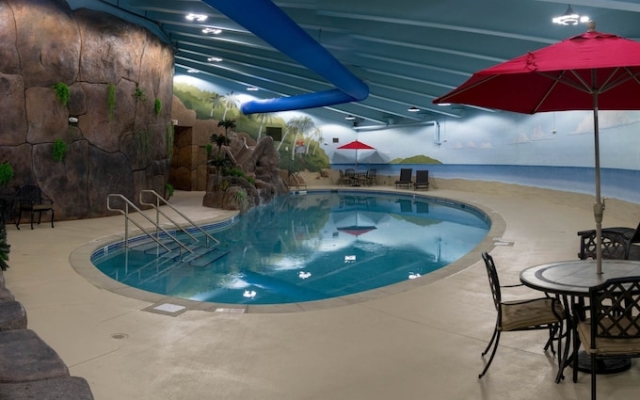 Pool in Larry Hall's bunker Photo: Bradley L. Garrett
Pool in Larry Hall's bunker Photo: Bradley L. Garrett
After the nuclear apocalypse, there are two worlds left. The first is on the surface level, where militants, mutants, ghouls and scavengers compete for survival in an irradiated wasteland. The other is underground, where the descendants of the wealthy elite live in a comfortable corporate model of life before the event, safe in the vaults that sheltered their ancestors from the nuclear war that occurred 219 years ago.
This is how Amazon's new Fallout series begins. Executive producers Jonathan Nolan and Lisa Joy's (Westworld) fingerprints are clear on the production, and fans of the video game series on which it's based will be excited to see if it captures the same fun, noir-western worldview. after the end of the world.
I spent the better part of a decade researching and living in private bunkers around the world as part of a long-term research project involving doomsday preppers and survivors. What initially struck me when I watched the first season of Fallout was the uncanny resemblance of these imaginary spaces to the places I actually visited in meatspace.
Fallout's dungeons contain cavernous public areas with a retro-future aesthetic, where functional cornfields in the foreground are video projections of a 1950s Nebraska skyline, replete with grain towers, fluffy clouds, and distant mountains shadowed by lanscaine—the interlacing and intertwining skyline that you see at blue hour. I thought the temperature in this Nebraska simulation would be perfect. There would be no wind and no insects. The inhabitants of Vault 33, where the series begins, move with ease through riveted sections of tunnel from one artificial atmosphere to another. It was easy to imagine yourself living in a vault, oblivious to the outside world and completely content.
This scenario, so vividly presented in the series, was suggested to me in Kansas — a real place — by a man preparing for doomsday, named Larry Hall.
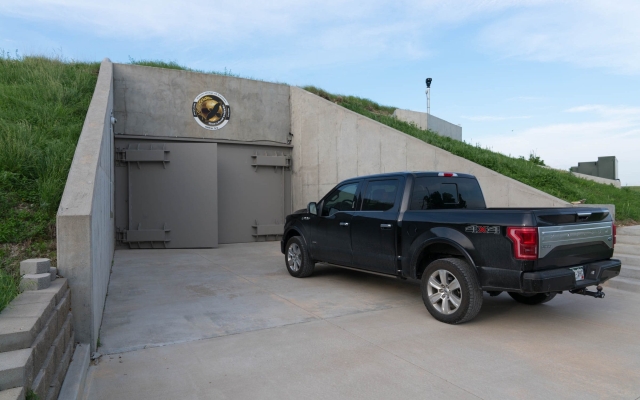 Exterior view of Larry Hall's bunker
Exterior view of Larry Hall's bunker
In the 1990s, Hall worked for the private defense company Northrop Grumman, where he oversaw the construction of bunker-based data centers. Reading the tea leaves, Hall decided to use his experience as a government contractor to build something that had never been built before: a public bunker for the super-rich.
And yes, I'm talking about a facility even cooler than the 5,000 square foot bunker that Mark Zuckerberg recently unearthed under his Kauai ranch or the bunker owned by Tom Cruise, Bill Gates, Donald Trump, former Paypal CEO Peter. Til. Or, indeed, the property recently purchased by Jeff Bezos on Indian Creek Island off the coast of Florida, a man-made landform often called the «Billionaire's Bunker» due to its cluster of super-tycoon mansions.
In 2008, Hall purchased an Atlas F missile silo from the federal government for $300,000. The nuclear-tipped intercontinental ballistic missile that once housed it has been removed. What remained was a vertical canister made of three feet of epoxy and stainless steel concrete mesh mounted on spring shock absorbers that extended 60 vertical meters underground behind eight-ton armored blast doors. In other words: storage. We could call it Vault 1, which bears an uncanny resemblance to Vault 1 in the Fallout video games, created by the Vault-Tec corporation located somewhere in the «Great Midwest Commonwealth.»

This coincidence — the reproduction of video games in the real world, the reproduction of real life — made me think of the French cultural theorist Jean Baudrillard, famous for his the theory of «hyperreality», a state in which the mind is unable to distinguish reality from simulation. reality, especially in technologically advanced societies. As I quickly discovered, this was one of those rare cases when an obscure French theory serves as a perfect map for experience.
By 2010, Hall had converted the 200-foot-deep bunker into a 15-story luxury shelter where a community of up to 75 people could endure five years inside a sealed, self-contained bunker during Judgment Day. When the event passed, the inhabitants expected to be able to reappear in the post-apocalyptic world (or what preppers colloquially call PAW) to rebuild it.
In the meantime, residents will carry on with their lives largely as they did before the disaster. As we rode the elevator down 15 floors, Hall took me on a tour of the grocery store, movie theater, bar and shooting range inside the bunker, as well as the climbing wall, game room, library, gym, education center, pet park. hospital and arsenal. At one point, he opened the door and flipped a switch to illuminate the 50,000-gallon indoor pool, surrounded by a rock waterfall, lounge chairs and a picnic table.
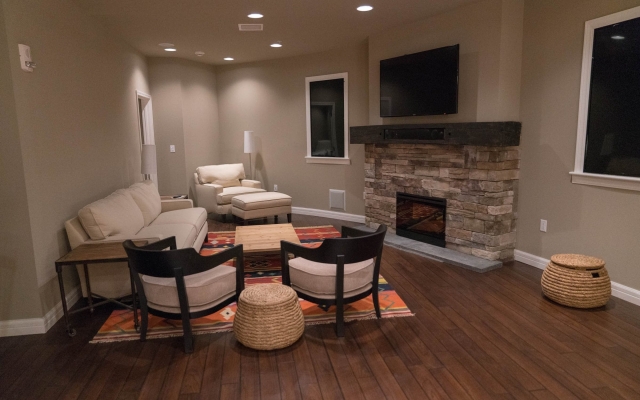 One of the apartments in the Hall bunker. Photo: Bradley L. Garrett
One of the apartments in the Hall bunker. Photo: Bradley L. Garrett
“It doesn’t matter if you’re woodworking or just walking the dog,” Hall told me. “It’s really important that people feel like they’re living a relatively normal life. You need quality food and water to make sure everyone feels safe and feels like they're working together toward a common goal. This thing is supposed to function like a miniature cruise ship.» A ship that moves in time, not in space.
As in the Fallout series, it's not that difficult to imagine living underground in an environment capable of supporting life, both technically and materially. The basics of survival at the bottom of Maslow's pyramid of needs—food, water, shelter, and safety—are relatively easy to provide during short-term isolation. A much more difficult task is to imagine creating a psychologically and socially tolerant environment that would be sustainable for multigenerational time travel. Keeping this earthship moving requires significant psychological manipulation. So, in the series we see the inhabitants of Vault 33, deep under Los Angeles, living in blissful ignorance.
Luckily for us, one of the series' three main characters, Lucy (Ella Purnell), is quite willing to shatter this naivety, sometimes incredibly cruelly, with a shrug and a cheerful «Okay, Doki!» The series, like the games, is always about one man leaving a vault where he must quickly improve his skills in a hostile, confusing and, of course, highly irradiated world.

According to Dr. Emma Fraser, assistant professor of media studies at the University of California, Berkeley, and a leading expert on the Fallout franchise, the lone rogue wanderer is key to the storyline's appeal. The image, she said, satisfies a particularly American craving: the idea that we can brave vast landscapes alone with a pistol and a backpack, bringing to life a quintessential American identity story.
“The premise of Fallout,” she said. to me, is an alternate history of the Cold War, focusing on technological development, resource wars, self-preservation, and community reconstruction, all of which question what it means to be an American.” «.
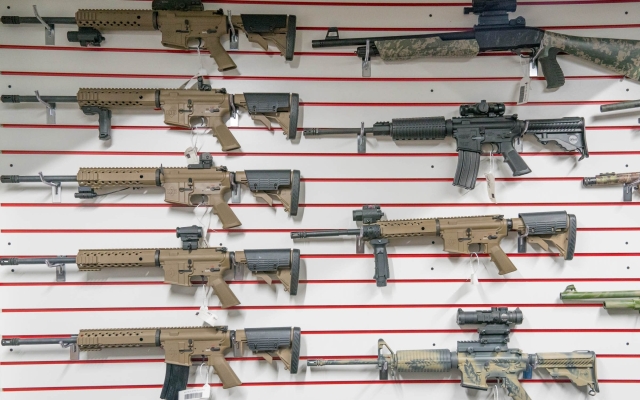 Well stocked bunker arsenal. Photo: Bradley L. Garrett
Well stocked bunker arsenal. Photo: Bradley L. Garrett
According to UK market research firm Pelham Smithers, the video game industry has grown from humble beginnings in 1972 from a US$2 billion industry to a US$180 billion giant today, making video games the most profitable entertainment industry, earning more money, than the music and film industries combined. The biggest jump came in 2020 when, you guessed it, during COVID everyone was trapped inside and looking for a way to distract themselves from the horror outside the front door.
But why did people live in virtual post-apocalyptic worlds? while a real apocalypse raged outside? Either they were so unhappy that they wanted to imagine an alternate timeline in which they had more freedom of action, or they actually practiced in-game training for an even worse scenario, sometimes building virtual bunkers.
Back at the bunker in Kansas, Larry Hall continued our tour of the real-life equivalent. On level 11, approximately 150 meters underground, we visited a well-appointed multi-story apartment measuring one thousand square meters. It was like walking into a clean, predictable chain hotel. There was a cozy white living room set and a stone electric fireplace with a flat-screen TV hanging above it. The marble countertop extended to the breakfast bar, separating the living room from the kitchen, which was stocked with high-end appliances. I looked at one of the windows and was shocked to see that it was dark outside. My immediate physiological reaction was to assume that we must have been underground longer than I thought. Then I realized my mistake.
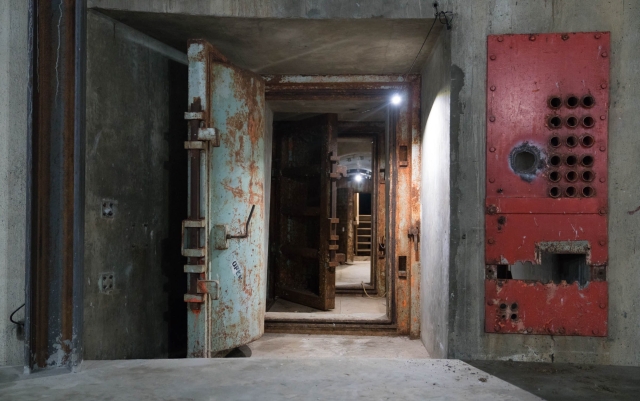 Entrance to Hall's bunker Photo: Bradley L. Garrett
Entrance to Hall's bunker Photo: Bradley L. Garrett
“Got it,” Hall said, laughing. He took the remote control and turned on the video stream broadcast into the «window», which was actually a vertically mounted LED screen. The scene depicted was a view from the bunker entrance at surface level above the blast doors. It was day outside, windy and covered in leaves. But the time when this video was taken was not necessarily obvious — perhaps it was a period of time and I was watching a pre-recorded past, and I was convinced that it was the present.
This thought sent a wave of anxiety down my spine. While many of the other bunker builders I met were selling crude hardware, Hall created a real bunker that made life on the outside seem a distant memory. Survival Condo was a capsule designed to eliminate the hardships of a hostile surface. The darker the reality outside the walls, the greater the need to maintain — and encourage the desire to remain inside — the capsule simulation. Creating the illusion of reality through screens, necessary to maintain stability after the event, was clearly part of Larry's plan to maintain order during lockdown.
The bunker is equipped with a vehicle for those who want to go beyond
This scenario contrasted sharply with another place where I spent a lot of time: the xPoint bunker complex in South Dakota, where residents endured terrible heat and flies in the summer and deep snow in the winter, always supplemented by biting winds. scattered lumps of cow dung from grazing herds. As one local explained to me, sitting on his cracked faux leather sofa in the middle of his more or less empty concrete igloo, the bunker he had purchased was the only place he could keep the horror of the Great Plains at bay. outside… perhaps this is another form of preparation for the apocalypse, without the luxurious trappings behind the explosive door.
At the end of my stay at Larry's storage facility, he took me to a second one under construction about 30 minutes away, where he described to me his dream of building a series of networked storage facilities on the Great Plains. Looking back on my time there, I was torn between whether Larry was going to become Vault-Tec, the Fallout company that originally built vaults. Or, in an even darker fantasy, The Survival Condo will be swallowed up by Amazon, which already has everything it needs, and sold to buyers under the name Amazon Vault Prime or something like that.
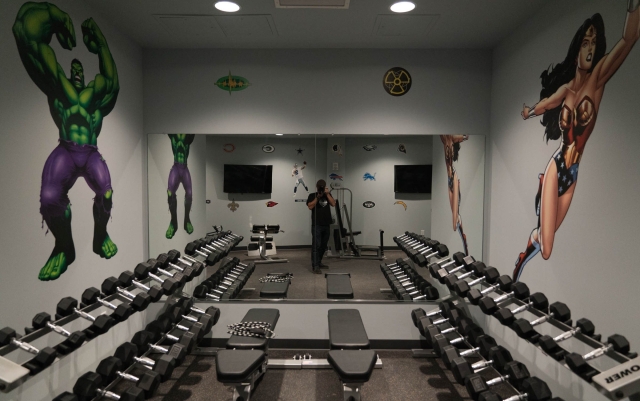 Inside the gym Photo: Bradley L. Garrett
Inside the gym Photo: Bradley L. Garrett
Which, of course, brings me back to our French philosopher friend Baudrillard. My experience of playing post-apocalyptic games, being in Hall's bunker, and then watching the Fallout series and feeling the boundaries between these experiences collapse is undoubtedly an archetypal example of Baudrillard's “hyperreality.” Trying to decipher whether alternative histories and convincing simulations created by humans manifest themselves as tangible spaces or vice versa seems almost impossible at this point in history.
The term «fallout» usually means nuclear fallout after an explosion, but fallout can also be understood as “the adverse side effects or results of a situation.” It makes me wonder what the consequences of Fallout will be.
Dr. Bradley Garrett is a cultural geographer based in Southern California. His latest book is The Bunker: What It Takes to Survive the Apocalypse.








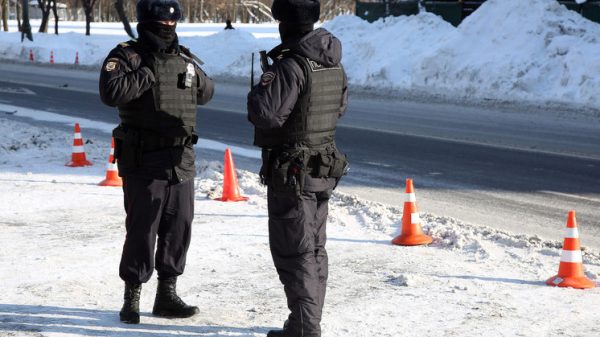





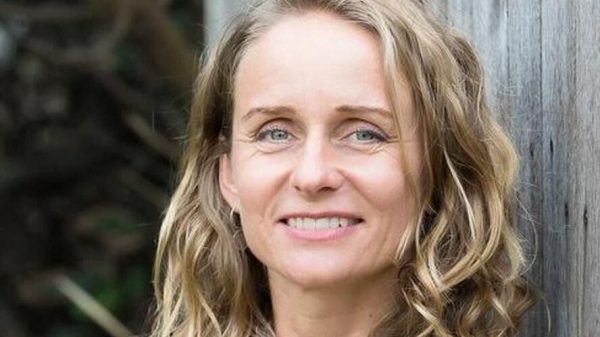



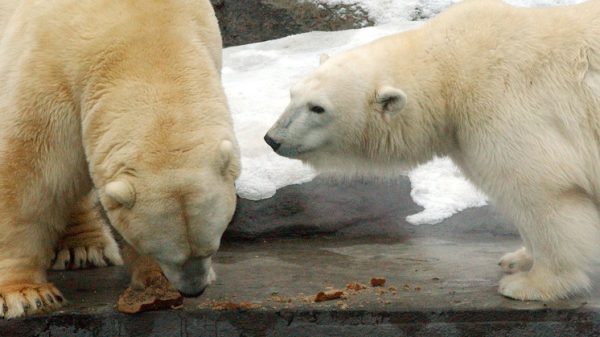































Свежие комментарии